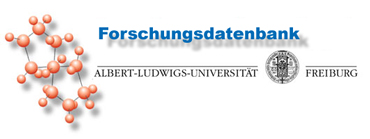| [Zurück zum Forschungsbericht] |
 |

Ökologie des Wildschweins Sus scrofa in der Nähe von Schutzgebieten
Projektbeschreibung:In strict nature reserves and core zones of protected areas hunting and forestry operations are often restricted or banned. However, regarding the management of Wild boar, such hunt-free zones are discussed controversially and can lead to conflict. Hunters whose areas border no-hunting zones (and who have to reimburse farmers for crop damages caused by Wild boar) are concerned that the boars may evade effective population management by staying within the limits of the no-hunting zone, and farmers fear increased crop damage in the surroundings of such areas. Some conservationists are also concerned because Wild boars increasingly root protected habitats and can cause damage to rare plant assemblies. The three-year project “Wild boar problem in the vicinity of protected areas” by the Game Research Institute (Wildforschungsstelle) at the Centre for Agriculture Baden-Württemberg (LAZBW) aims at investigating if and how no-hunting zones might affect Wild boar activity, movement patterns, home range size, and habitat use, as well as crop damage caused by boars, by comparing these aspects between hunting-free zones and unprotected areas. Although there have already been a number of telemetry studies on Wild boar, including space use in the context of hunting activity, to date there is no study that has specifically investigated spatial and ecological aspects in and around protected areas. My dissertation “Ecology of Wild boar Sus scrofa in the vicinity of protected areas” is being carried out within the scope of the Game Research Institute’s project and apart from the aims outlined above, further aspects of Wild boar ecology will be investigated, especially the role of Wild boar as “bio-engineer” and habitat creator for other species vs. unwanted damages at protected sites. Twenty-seven Vectronic GPS-GSM satellite collars with integrated activity sensors are available to tag Wild boars in three study areas: the non-protected Altdorfer Forest near Aulendorf with regular hunting activity and forestry, the nature reserve Wurzacher Ried with its ca. 700 ha core zone that is a strict reserve with no human activity, and the Biosphere Reserve Swabian Jura, especially in the surroundings of the former military training area near Münsingen and the 170 ha “no-usage-area” Föhrenberg.Projektlaufzeit:
Weitere Informationen: http://www.lazbw.de/pb/,Lde/Startseite/Wildforschungsstelle/Schwarzwildprojekt
Ansprechpartner: Prof. Dr. Ilse Storch
Projektbeginn: 2013Projektleitung:
Projektende: 2017
Markus HandschuhKooperationspartner
LAZBW Wildforschungsstelle Aulendorf
Professur für Wildtierökologie und Wildtiermanagement
Prof. Dr. Storch
Tennenbacher Str. 4
79106 Freiburg
Telefon: + 49 (0) 761 203 - 3663
Fax: + 49 (0) 761 203 - 3667
http://www.wildlife.uni-freiburg.de
LAZBW Wildforschungsstelle AulendorfAktueller Forschungsbericht